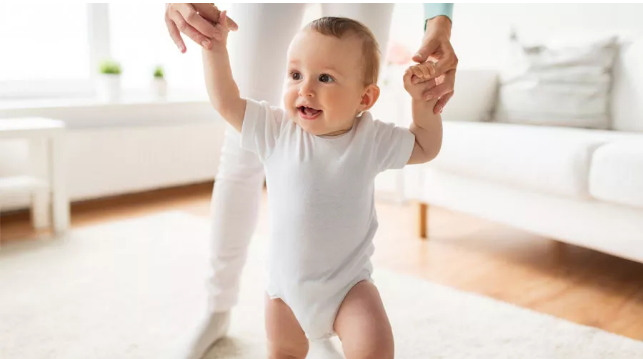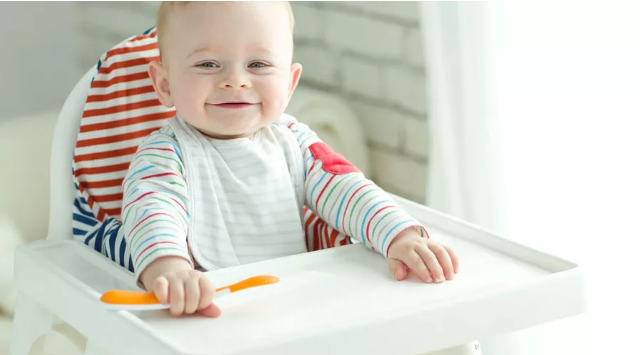After the baby starts to learn to walk, many parents will think of buying a walker to help the baby [learn to walk], but for the baby who cannot walk yet, the walker is a very dangerous item.
Every year, there are accidents caused by the use of walker:
In March 2012, a 9-month-old baby in Xining, Qinghai, died instantly because the walker slipped down the stairs.
In October 2013, a 10-month-old baby in Shandong was scalded extensively by boiling water because a walker knocked over thermos flask.
On June 9, 2014, CCTV’s < < Focus Interview > > column reported a case of intracranial hemorrhage of a baby caused by the use of a walker.
… …
From these painful examples, it can be seen that even though there are dereliction of duty in parental care, it has to be said that walker is also an important factor leading to baby injuries.
Walker is extremely easy to cause injuries.

For babies who cannot walk yet, the walker seems to have opened the door to a new world. Babies can go to many places with the help of the walker and can easily drive to dangerous places.
You know, the speed of the walker can exceed 1 m/s, which is equivalent to the normal descending speed of the elevator. However, the baby’s head accounts for a large proportion of the body, the upper body is heavier, and it is exposed outside the body. It is easy to overturn or roll when encountering the step environment.
It is precisely because the walker is too fast that even if the guardian sees the danger approaching, it is sometimes too late to respond.
The most common is to rush down stairs or steps, causing baby trauma, even fracture and intracranial hemorrhage.
The risks reported by the American Academy of Pediatrics (AAP) alone include:
- Turn down the steps: The wheels of the walker roll easily when they encounter steps, carpet edges or other obstacles on the ground. Children have no ability to protect themselves at all. Once the walker rolls over, The first injury was the child’s head. Burn: The walker supports the child’s hips, widening the child’s vision and access to things. If parents do not take precautions in advance, the child is likely to pull the tablecloth, burn himself by the hot water on the table, or knock over the thermos bottle. Drowning: Outside, the walker overturns on the swimming pool or the steps beside the pool, and the child is likely to fall into the water.
According to a survey by the American Association of Pediatrics (AAP), from 1990 to 2014, about 230,676 babies < 15 months old in the United States received emergency treatment due to baby walkers (this is not counting injured babies who did not enter the emergency treatment). Among them, 90.6% of the infants suffered head and neck injuries and 4.5% of the infants suffered upper limb injuries.

The walker does not teach the baby to walk

Many parents buy walkers simply because they think walkers can [teach] their babies to walk.
Unfortunately, there is no study showing that babies who use walkers learn to walk earlier than babies who do not use walkers.
On the contrary, from the law of baby’s growth and development, the walker violates the law of baby’s growth and development from turning over, sitting, climbing, standing and walking.
Due to the help of the walker, the baby will not fall down even if he cannot control his balance, which is not conducive to the baby’s practice of independent walking and balance control and affects the normal development of the baby’s body muscles.
European experts have investigated 190 babies and found that 102 babies who use walkers are 3-4 weeks behind babies who have not used walkers in crawling and walking upright.
At the same time, if the walker straddle is too high, causing the baby to walk on tiptoe, it is easy to walk on tiptoe when the baby can walk independently, which will adversely affect the baby.
Don’t be fooled by false security images.

China officially implemented the “Safety Requirements for Baby Walker (GB14749-2006) > > on January 1, 2007, and also made relevant regulations on walker.
In 2011, the European Commission’s non-food rapid warning system issued a consumer warning to Chinese-made walkers. In 2011, China’s Ministry of Health issued a document saying that walkers were not recommended.
However, if you open a large shopping website in China and search for [toddler], there will be more than hundreds of pop-up merchants, and you will open one casually with a sales volume of tens of thousands.
The reason for this is that apart from some parents still have fantasies about its [toddler] function, another important factor is that in the eyes of many parents, the toddler will indeed reduce the burden of taking care of children [free hands].
I would like to advise all parents that auxiliary tools such as walker will only bring you a false sense of security, and do not put your baby in danger for the sake of relaxation.
Therefore, if you have already bought a walker, you can be ready to put it away.
